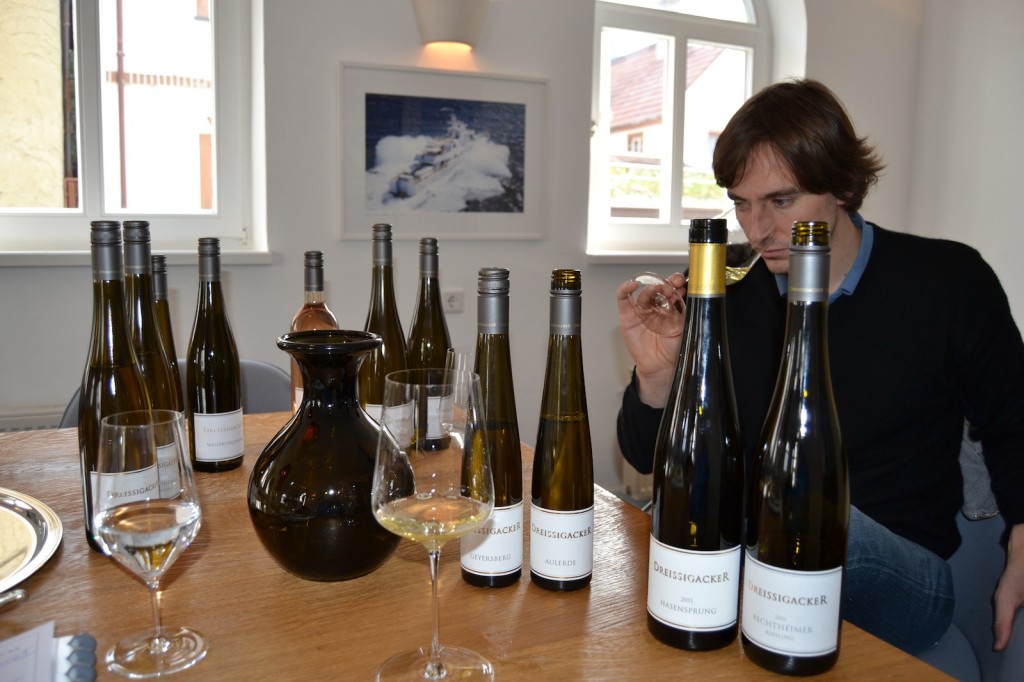
Here is the second of four installments of 18 year old Thorsten Jordan’s guest column about the Wonnegau area of Rheinhessen, once the home of Liebfraumilch, now one of the most dynamic wine growing areas of Germany, indeed on Planet Wine. Today Thorsten reports on his visits to a handful of the winemakers who established themselves here during the last decade like Jochen Dreissigacker of Bechtheim pictured above, and currently rising stars like Marc Weinreich, also of Bechtheim. In it he discovers how fundamental the free exchange of ideas and experiences amongst the young and very young winemakers of the area was fundamental to its reinvention of itself as a place dedicated to the production of good and great dry white wines. That remains the case to this day. Once again, my apologies non-German speakers!
Dieses Jahr Ende März kam ich dann wieder nach Rheinhessen, aber keinesfalls um wieder ein Praktikum zu absolvieren, nein. Diesmal hieß mein Auftrag Recherche zu betreiben. Recherche über den neuen Jahrgang im Wonnegau. Recherche über die Besonderheiten des Wonnegau für den Wein. Ich handelte im Auftrag Stuart Pigotts, mein Gott, wie hörte sich das an! Erhobenen Hauptes stieg ich in den Zug nach Stuttgart und genoss die Fahrt.
Es war etwa 13.30 Uhr, als ich auf die Gleise des Osthofener Bahnhofs in Rheinland-Pfalz trat. An der Infotafel erfuhr ich, dass der Komponist Wagner zu seinen Lebzeiten einem Müller des Ortes das Original eines seiner Stücke gegeben hat um an Geld zu kommen. Welches seiner Stücke es war, daran kann ich mich nicht mehr erinnern, meine Begeisterung für klassische Musik begrenzt sich auf ein paar Stücke. Aber lange musste ich mich mit der Infotafel nicht aufhalten, denn Andreas Geil vom Weingut Helmut Geil in Monzernheim kam auch schon um die Ecke um mich abzuholen. Von mir in Franken aus ist Andreas der beste Draht nach Rheinhessen, den ich habe. Und als ich ihm von dieser kleinen „Wein-Reise“ erzählte stand für ihn sofort fest, dass ich bei ihm unterkomme und dort auch meine „Kommandozentrale“ einrichten könnte.
Und so kam es dann auch, dass ich die ersten beiden Tage meiner Reise ausschließlich bei Geil’s verbrachte. Sofort wurde ich wieder in den Arbeitsalltag integriert, was mir sehr gut tat. Am Sonntag kam dann DAS Ereignis überhaupt. Ostereier-Schießen in der Gemeindehalle Monzernheims. Naja, an den erbeuteten Eiern hatte ich die ganze restliche Zeit zu kämpfen…
Am Dienstag hatte ich dann meinen ersten Termin beim Winzer. Zu Gast war ich beim Weingut Keller in Flörsheim-Dalsheim, eines DER Weingüter der Gegend, wenn nicht gar Deutschlands. Es war bereits 17 Uhr als ich dort eintraf. Ich könnte jetzt stundenlang erzählen, alleine über die Weine. Aber dazu in einem anderen Teil mehr!
Dieser erste Besuch hatte schon etwas Interessantes und auch Imposantes und ich freute mich auf die restlichen sechs Weingüter, die noch an der Reihe waren. Das, was mir aber mitunter am besten an dieser „Recherche-Reise“ gefiel war, dass ich für 2 Wochen bei Andreas Geil in die Lehre gehen konnte. Vom Versandkartons packen über Reben binden bis hin zum Filtrieren wurde ich wieder in alle anfallenden Aufgaben mit einbezogen! Es tat wirklich gut, alles hautnah miterleben zu können und fast schon als Mitglied des Weinguts gesehen zu werden.
Aber ich war ja nicht wegen der Arbeit sondern hauptsächlich wegen der anderen Weingüter hierhergekommen. Am Donnerstag war es dann soweit, mein nächster Besuch war an der Reihe, auf ging es zum Weingut Dreissigacker in Bechtheim. Dreissigacker – ich glaube vielen ist dieser Name genau so geläufig wie Keller. Als ich voriges Jahr im August in der Gegend war, da weihte man gerade den Neu-/Umbau ein. Der Unterschied war diesmal, dass ich die Gebäude nicht nur von außen sah, diesmal war ich drin. Und es war imposant. Es war sehr klassisch gehalten, epochenmäßig irgendwo zwischen Barock und Romantik würde ich behaupten. Dabei aber keinesfalls protzig und verspielt sondern schlicht gehalten, einfach in Weiß. Im Probierraum erstreckte sich ein Eichenholztisch (würde ich behaupten) von der einen Seite des lichtdurchfluteten Raumes zur anderen. Der Tisch war riesig und bot locker Platz für zwanzig Personen oder etwas mehr. Auf dem Tisch stand in großen silbernen Buchstaben „Dreissigacker“ geschrieben. Gut, dachte ich, das ist eine andere Liga als alles, was du, ausgenommen Keller natürlich, bisher hattest. Du wirst stur die Weine durchprobieren und dann wird man dir die Hand reichen und du darfst gehen. Das waren meine Gedanken!
Doch schon bei der Probe der Weine (eigentlich sogar schon bei der Begrüßung) stellte sich heraus, dass ich vollkommen falsch lag mit meiner Annahme! Wie man auf dem Bild sieht standen eine
Menge Flaschen auf dem Tisch. Doch ein Wein fehlte noch, das Glanzstück Jochen Dreissigackers, wie ich finde. Der „Einzigacker“, ein Weißburgunder, florale und kräuterige Noten mit einer belebenden Frische und trotz dessen eine Power dahinter, die fasziniert! In meiner persönlichen Wertung (es gibt maximal sechs ♫) bekommt der hier lockere 5,5, also ♫♫♫♫♫♪ Noten. Doch wie das so ist bei den großen Weinen sind sie in den meisten Fällen, so auch beim Weingut Dreissigacker, nicht mehr ab Hof verfügbar. Die angebrochene Flasche bekam ich später trotzdem mit! Ein netter Zug wie ich finde! Nach der Probe kam dann das, was ich schon vorher hätte gebrauchen können, das Mittagessen. Daran durfte ich ganz im Sinne der Gastfreundschaft des Winzers teilnehmen und mitdiskutieren. Mein Besuch startete um 10 Uhr und endete erst nachmittags, auf dem Weingut Geil, wo mich Jochen Dreissigacker freundlicherweise ablieferte.
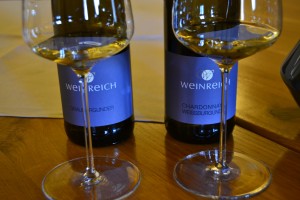
Doch es dauerte nicht lange, bis Bechtheim mich wieder sah. Am Dienstag der zweiten Woche war ich um 10 Uhr beim Weingut Weinreich. Es war ein schönes Weingut, direkt daran auch eine Gaststätte (oder zumindest eine Art solche) angeschlossen, die von Marcs Schwester betrieben wird (wirklich sehr gute Küche, unbedingt besuchen, wenn man in der Nähe ist!). Marc Weinreich, das ist der Winzer, der hinter der Marke „Weinreich“ steht. Mit im Betrieb ist aber auch sein Bruder Jan, den wir bei unserer kleinen Besichtigungstour im Keller antrafen, gerade dabei, Holzfässer zu reinigen. Doch der Marc muss gespürt haben, dass ich ganz wild auf Wein bin und so steuerten wir auf die Probierstube zu.
Es kamen erst die weißen, dann die Fassproben, die mich sensorischen Analphabeten fast um den Verstand gebracht hätten! Doch ich muss mich ganz wacker geschlagen haben. Den Lichtblick nach dieser anstrengenden Arbeit stellte das Mittagessen dar! Doch danach war die Arbeit noch längst nicht getan, es folgten noch die Roten. Und da kristallisierte sich mein Favorit heraus! Der„basisrot_2011“ bewies Power und Eleganz, Fruchtigkeit und Finesse zugleich. Sein Geheimnis? Das weiß ich nicht, ist er doch eigentlich ein einfacher Trinkwein und wird nur an die Gastronomie geliefert. Als Abschluss des Tages saß ich noch mit Marc und seiner Frau bei einer Tasse Kaffee zusammen und man erzählte und lachte. Was ist der Wonnegau? Für den Wein? Für die Menschen? Warum ist der Wonnegau so besonders? Das sind die zentralen Fragen, die mich auf meiner Recherche begleiten. Ich habe eine Antwort darauf gefunden. Der Wonnegau ist Freundschaft, er ist Familie! Der Wein hilft dabei!
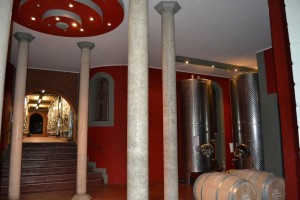 Tag 11 meiner Reise, heute mache ich Station beim Weingut Spiess, auch wieder in Bechtheim. An diesem Tag wurde abgefüllt und ich würde etwas auf Johannes Spiess warten müssen. Nicht schlimm dachte ich mir und schaute mich derweil etwas um. Doch der junge Winzer ließ nicht lange auf sich warten und es ging auf kleinem Umweg in den Keller. Erst in den alten, dann in den neuen. Der neue wurde nämlich erst vor etwa 5-6 Jahren eingeweiht. Mit Barriquekeller, und in schmuckem Ambiente, Säulen hier, das Familienwappen da. Es wirkte alles sehr imposant! Vor allem der Barriquekeller stach alles zuvor Gesehene aus. Etwa 200 Barriques lagen derzeit in diesem Teil des Kellers, meinte Johannes Spiess. Wahnsinn, dachte ich mir! Genau das ging mir bei seinen Weinen, vor allem beim Chardonnay „S“ und beim Merlot „R“ durch den Kopf! Beide Weine hatten eine schokoladige sowie auch kräftige Note, die mich sehr ansprach! Beide Weine liegen nun bei mir zu Hause! „Weißt du, ein Eingriff im Keller hat immer zwei Seiten. Man nimmt dem Wein vielleicht etwas schlechtes, das man nicht haben will. Gleichzeitig nimmst du dem Wein aber auch einen Teil seines guten, das ihn ausmacht!“ Mit diesen Worten verabschiedete er mich, die Arbeit rief!
Tag 11 meiner Reise, heute mache ich Station beim Weingut Spiess, auch wieder in Bechtheim. An diesem Tag wurde abgefüllt und ich würde etwas auf Johannes Spiess warten müssen. Nicht schlimm dachte ich mir und schaute mich derweil etwas um. Doch der junge Winzer ließ nicht lange auf sich warten und es ging auf kleinem Umweg in den Keller. Erst in den alten, dann in den neuen. Der neue wurde nämlich erst vor etwa 5-6 Jahren eingeweiht. Mit Barriquekeller, und in schmuckem Ambiente, Säulen hier, das Familienwappen da. Es wirkte alles sehr imposant! Vor allem der Barriquekeller stach alles zuvor Gesehene aus. Etwa 200 Barriques lagen derzeit in diesem Teil des Kellers, meinte Johannes Spiess. Wahnsinn, dachte ich mir! Genau das ging mir bei seinen Weinen, vor allem beim Chardonnay „S“ und beim Merlot „R“ durch den Kopf! Beide Weine hatten eine schokoladige sowie auch kräftige Note, die mich sehr ansprach! Beide Weine liegen nun bei mir zu Hause! „Weißt du, ein Eingriff im Keller hat immer zwei Seiten. Man nimmt dem Wein vielleicht etwas schlechtes, das man nicht haben will. Gleichzeitig nimmst du dem Wein aber auch einen Teil seines guten, das ihn ausmacht!“ Mit diesen Worten verabschiedete er mich, die Arbeit rief!
Zwei Tage später war ich beim Weingut Wittmann zu Gast. Der Chef hatte leider keine Zeit, aber eine sehr nette Mitarbeiterin nahm mich in Empfang und bot mir erst einmal einen Überblick über die gesamte Produktpalette. Der vierte Wein packte mich! 2012er Scheurebe, Joghurt, Rhabarber und kräuterige Würze. Den Vorgänger-Jahrgang habe ich 2012 kurz bevor ich das erste Mal nach Rheinhessen kam getrunken. Für mich also schon eine wichtige Erinnerung! Seit diesem Tag weiß ich, dass Wittmann in Sachen Scheurebe Spitzenreiter ist, zumindest habe ich bis heute keinen vergleichbaren Gutswein gefunden. Das Highlight war der neue Jahrgang der Morstein Riesling Auslese. Schon nach dem ersten Schluck spürte ich, wie mein Blut dicker wurde, neuer Jahrgang bedeutet ja auch viel Zucker! Den Abschluss bildeten die Weine des Weinguts Ansgar Clüsserath, die von Philipp Wittmanns Frau Eva gekeltert werden. Dort gefiel mir besonders der Trittenheimer Apotheke Kabinett von 2011. Schöne Sponti-Nase, Apfel, Lychee, Stachelbeere; angenehme Mineralik und Wahnsinns-Abgang!
Nach der Probe folgte noch die Führung durch den Keller. Da Bilder aber ja bekanntlich mehr sagen als tausend Worte, voilà:
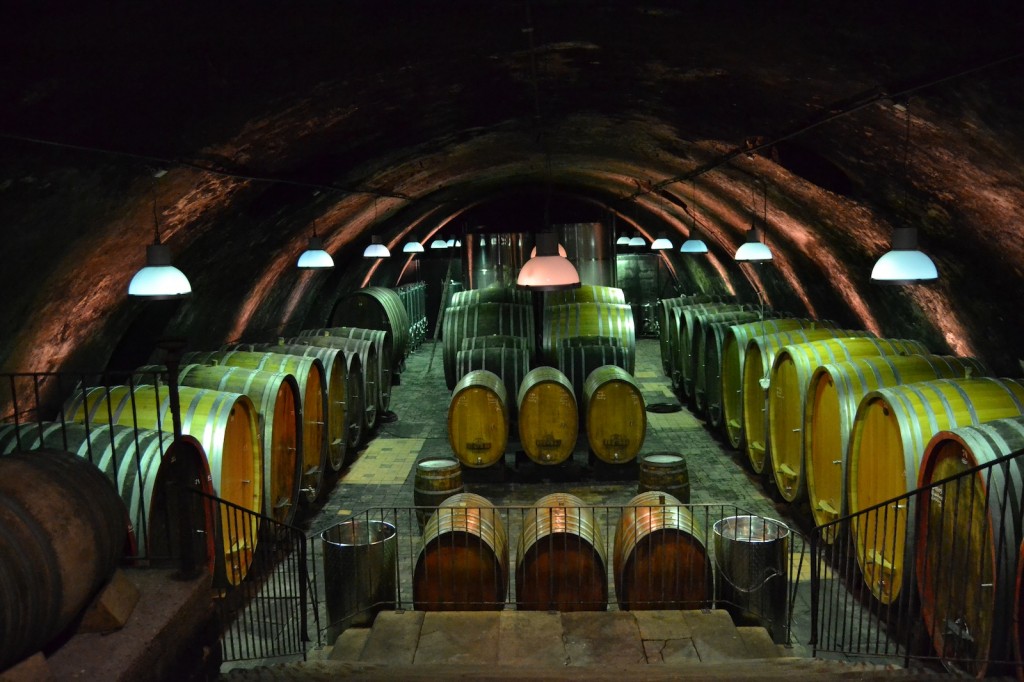
Es war Freitagabend und ich hatte nur noch zwei Tage, bis es wieder hieß: Abschied nehmen. Der Besuch bei Wittmann am Morgen schwirrte mir noch im Kopf herum, doch schnell wurde ich abgelenkt durch Marc Weinreich, Andreas Geil und andere Winzer aus der Umgebung. Man beschloss einen gemütlichen Abend in der Probierstube des Weinguts Weinreich zu verbringen und seinen Horizont zu erweitern. Mit von der Partie waren Weine von Knipser, von Ǒthegraven, Schäfer-Fröhlich, van Volxem und so weiter. Es war ein langer und spaßiger Abend, begleitet von der sensationellen Küche des Hauses. Es war wieder ein Abend, an dem Freundschaften geschlossen wurden. Und schlafen konnte ich ganz besonders gut!
Samstagvormittag stand mein letzter Termin an, bei Stefan Winter vom Weingut Winter in Dittelsheim-Heßloch. Auch Stefan hatte erst neu gebaut, das Weingut war umgezogen. Der Probierraum, der nicht mehr als einen laaangen Tisch und eine Theke beinhaltete, erinnerte eher an eine skurrile Mischung aus Diskothek und Rittersaal. Doch die Gestaltung war zu klassisch und schlicht um sie skurril zu schimpfen. Die zwei kürzeren Seiten des Raumes bestanden jeweils aus einer die ganze Länge umfassenden Fensterfront, die den Raum selbst bei dem wolkenbedeckten Himmel, der herrschte, hell beleuchtete. Die weißen Wände und die anthrazitfarbenen (oder so etwas in der Art) Fensterrahmen ergänzten sich prima! Doch ich war ja eigentlich wegen dem Wein gekommen… Stefan Winter war ein junger, sympathischer Kerl. Er zögerte nicht lange und stellte mir die Weine auf den Tisch. Erst seit Frühjahr 2013 ist sein Weingut VDP-klassifiziert, ein wahrer Meilenstein auf der Siegerstraße. „Muss man sich erst an dieses neue Gefühl, diesen neuen Standard gewöhnen“, fragte ich ihn. „Nein“, war seine Antwort. Er arbeite schon lange nach den Prinzipien des VDP, das müsse man ja auch, um überhaupt in den Fokus zu geraten. Die Umgewöhnung war sozusagen ein Katzensprung, es mussten nur neue Etiketten her. Nichts desto trotz, einen Luxus hat sich der sympathische Jungwinzer doch gegönnt. „Unsere Kunden kennen unseren Kalkstein Riesling schon seit Jahren unter diesem Namen. Mit der Aufnahme in den VDP ist er als Ortswein klassifiziert, der Name bleibt aber. Jeder würde ihn weiterhin Kalkstein nennen. Wenn sich der Name schon einmal etabliert hat, warum ihn dann ändern!“. Nachvollziehbar und durchdacht, so erlebte ich jede seiner Argumentationen an diesem Tag. Absolutes Highlight unter den Weinen war der Chardonnay „S“ von 2010. Ein Projekt, das er für sich gemacht hat. „Wir haben nicht vor, diesen Wein in den Verkauf zu bringen. Das ist ein Ding für mich und meine Familie. Oder eben besondere Gäste!“. Ich fühlte mich geschmeichelt, sowohl von Stefan als auch von dem Wein. Dieser bestach nämlich durch etwas herbe Exotik, unterstützt vom Holz aber gut ausbalanciert durch die Säure. Ein Traum! Mit etwas Wein im Rucksack und einem Grinsen im Gesicht wurde ich von Stefan Winter direkt im Weingut Geil abgeladen. Mein letzter Termin war vorüber und ich war sowohl glücklich, dass dieser Stress ein Ende gefunden hatte. Auch war ich froh, diese ganzen Erfahrungen gemacht haben zu dürfen! Auf der anderen Seite waren die zwei Wochen viel zu schnell vorüber gegangen!
Ich verbrachte noch einen schönen Abend zusammen mit der Familie Geil und am nächsten Morgen hieß es dann auch schon Abschied nehmen. Ich erinnerte mich zurück, was die zwei Wochen geschehen war. Ich war im Weinberg Reben binden, hatte einen „Stickel“ ausgebessert, sowohl Rot- als auch Weißwein filtriert und wie schon letztes Jahr hatte ich jede Menge Spaß dabei, von Andreas und seinem Vater Helmut Geil zu lernen! So wie der letzte Abschied von den Geils fiel er mir auch dieses Mal nicht leicht. Aber ich konnte beruhigt in den Zug einsteigen, in dem Wissen, dass es nicht lange dauern würde, bis ich wieder zurückkomme! Bye for now Wonnegau!
![120114_riesling_global_RZ [1600x1200]](http://www.stuartpigott.de/wp-content/uploads/2013/06/120114_riesling_global_RZ-1600x12006.jpg)
 Whatever the truth behind all this is there are many strange creatures out on the streets, and I don’t just mean in Venice Beach where craziness is so normal even the tourists adjust to it fast. This being America some of those strange creatures are armed and dangerous. Ugly as even a weapon as small as the popular Glock 9mm pistol is, I think that ideas which are completely dislocated from any kind of reality are much more dangerous. Think of how some members of the Bush Administration dismissed the majority of journalists as members of the Reality-Based Community and what that said about the state of their minds. That drunken guy in the bar also told me about a group of people who are claiming that Chardonnay is the American wine and that it isn’t of French origin, but was actually discovered by Thomas Jefferson at Monticello. OMG! Sorry guys, but Chardonnay is a rather recent arrival in the US from Burgundy/France, and that’s not propaganda! It lagged behind Riesling until into the 1970s and only became big in California during the early 1980s. Prior to that German Riesling enjoyed extremely high renown in the US and American Riesling attempted to match its elegance, sometimes with considerable success. Riesling, both imported and domestic, has been making and continues to make a substantial comeback in the US, and regardless of whether people heckle me, throw rotten fruit, cans or rocks at me I won’t stop talking and writing about that.
Whatever the truth behind all this is there are many strange creatures out on the streets, and I don’t just mean in Venice Beach where craziness is so normal even the tourists adjust to it fast. This being America some of those strange creatures are armed and dangerous. Ugly as even a weapon as small as the popular Glock 9mm pistol is, I think that ideas which are completely dislocated from any kind of reality are much more dangerous. Think of how some members of the Bush Administration dismissed the majority of journalists as members of the Reality-Based Community and what that said about the state of their minds. That drunken guy in the bar also told me about a group of people who are claiming that Chardonnay is the American wine and that it isn’t of French origin, but was actually discovered by Thomas Jefferson at Monticello. OMG! Sorry guys, but Chardonnay is a rather recent arrival in the US from Burgundy/France, and that’s not propaganda! It lagged behind Riesling until into the 1970s and only became big in California during the early 1980s. Prior to that German Riesling enjoyed extremely high renown in the US and American Riesling attempted to match its elegance, sometimes with considerable success. Riesling, both imported and domestic, has been making and continues to make a substantial comeback in the US, and regardless of whether people heckle me, throw rotten fruit, cans or rocks at me I won’t stop talking and writing about that.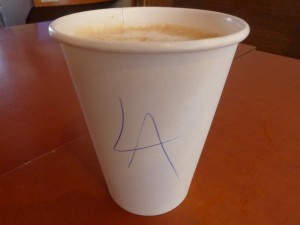 But back to day one of the RRT in LA tomorrow. We kick off with a tasting at Spago Restaurant in Beverley Hills. Although I’ve been to LA many times this will be my first visit to the restaurant where the luxury pizza was invented by Austrian chef Wolfagng Puck. There I will also meet the restaurant’s sommelier Christopher Miller who will be my companion on the trip as far as Phoenix/Arizona for the first time. So far all we did was have a telephone conference call. I hope (and expect) we’ll get on as well in the flesh as in the ether, but who knows. Then we have an evening tasting at the Covell Wine Bar in Hollywood. At both locations we’ll be emphasizing German Riesling’s enormous diversity from feather light to granite density and from bone dry to honey sweet. That’s something Chardonnay simply cannot match wherever it comes from and whoever discovered it. If you see us knock on wood for us!
But back to day one of the RRT in LA tomorrow. We kick off with a tasting at Spago Restaurant in Beverley Hills. Although I’ve been to LA many times this will be my first visit to the restaurant where the luxury pizza was invented by Austrian chef Wolfagng Puck. There I will also meet the restaurant’s sommelier Christopher Miller who will be my companion on the trip as far as Phoenix/Arizona for the first time. So far all we did was have a telephone conference call. I hope (and expect) we’ll get on as well in the flesh as in the ether, but who knows. Then we have an evening tasting at the Covell Wine Bar in Hollywood. At both locations we’ll be emphasizing German Riesling’s enormous diversity from feather light to granite density and from bone dry to honey sweet. That’s something Chardonnay simply cannot match wherever it comes from and whoever discovered it. If you see us knock on wood for us!
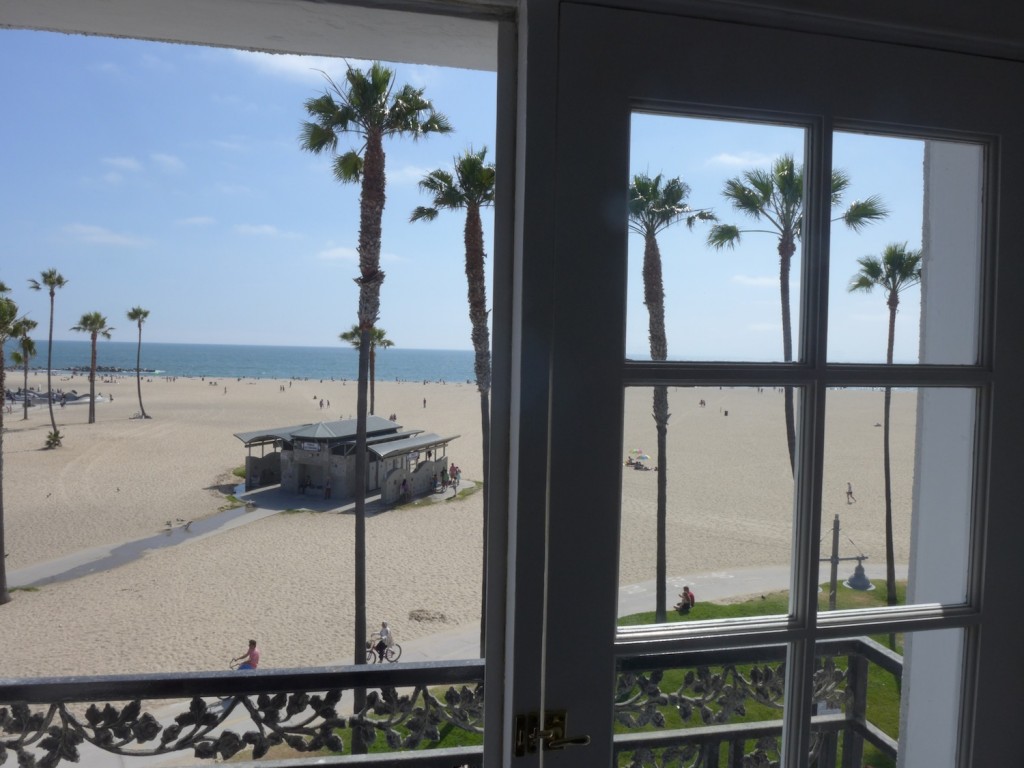
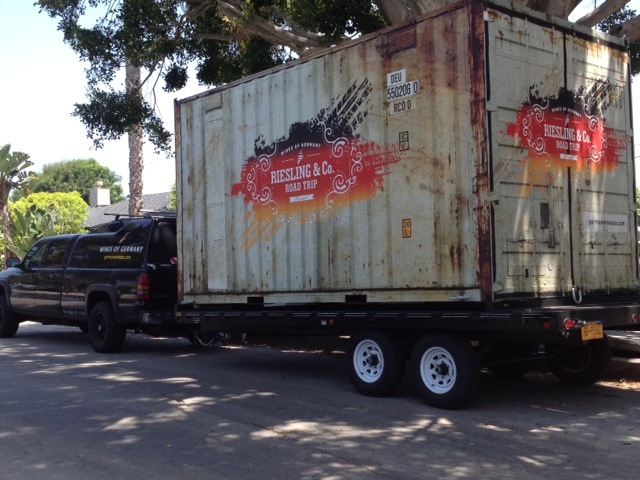
![120114_riesling_global_RZ [1600x1200]](http://www.stuartpigott.de/wp-content/uploads/2013/06/120114_riesling_global_RZ-1600x12009.jpg)
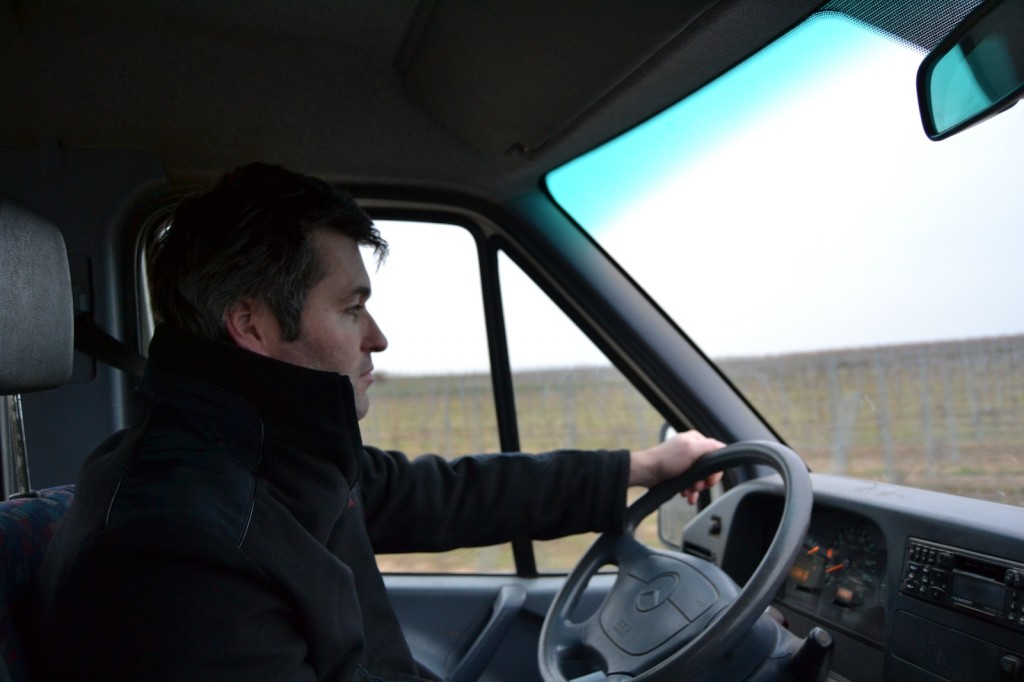
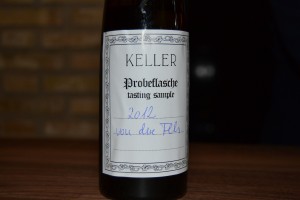
![120114_riesling_global_RZ [1600x1200]](http://www.stuartpigott.de/wp-content/uploads/2013/06/120114_riesling_global_RZ-1600x12008.jpg)

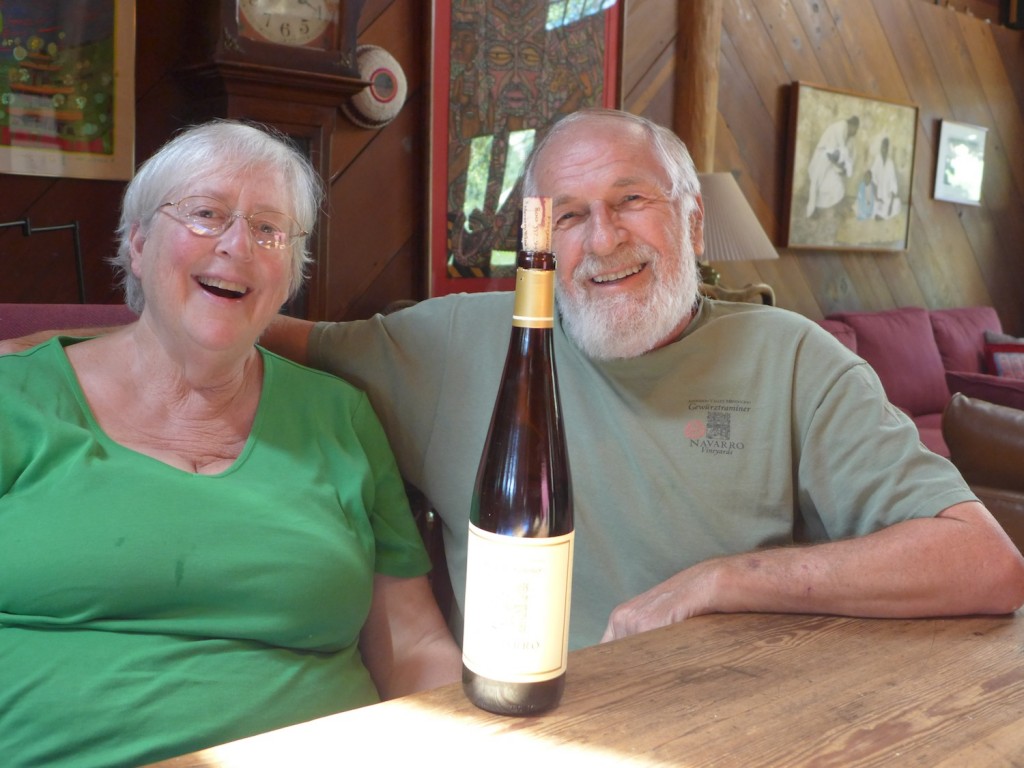
![120114_riesling_global_RZ [1600x1200]](http://www.stuartpigott.de/wp-content/uploads/2013/06/120114_riesling_global_RZ-1600x12007.jpg)




![120114_riesling_global_RZ [1600x1200]](http://www.stuartpigott.de/wp-content/uploads/2013/06/120114_riesling_global_RZ-1600x12006.jpg)
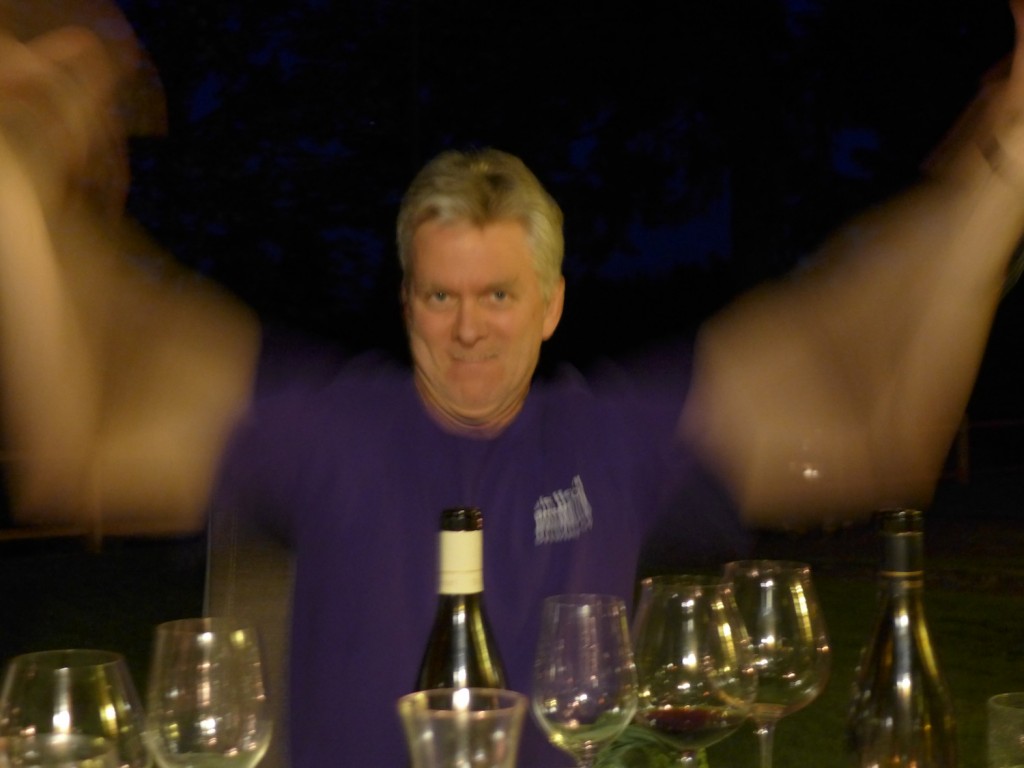

![120114_riesling_global_RZ [1600x1200]](http://www.stuartpigott.de/wp-content/uploads/2013/06/120114_riesling_global_RZ-1600x12005.jpg)
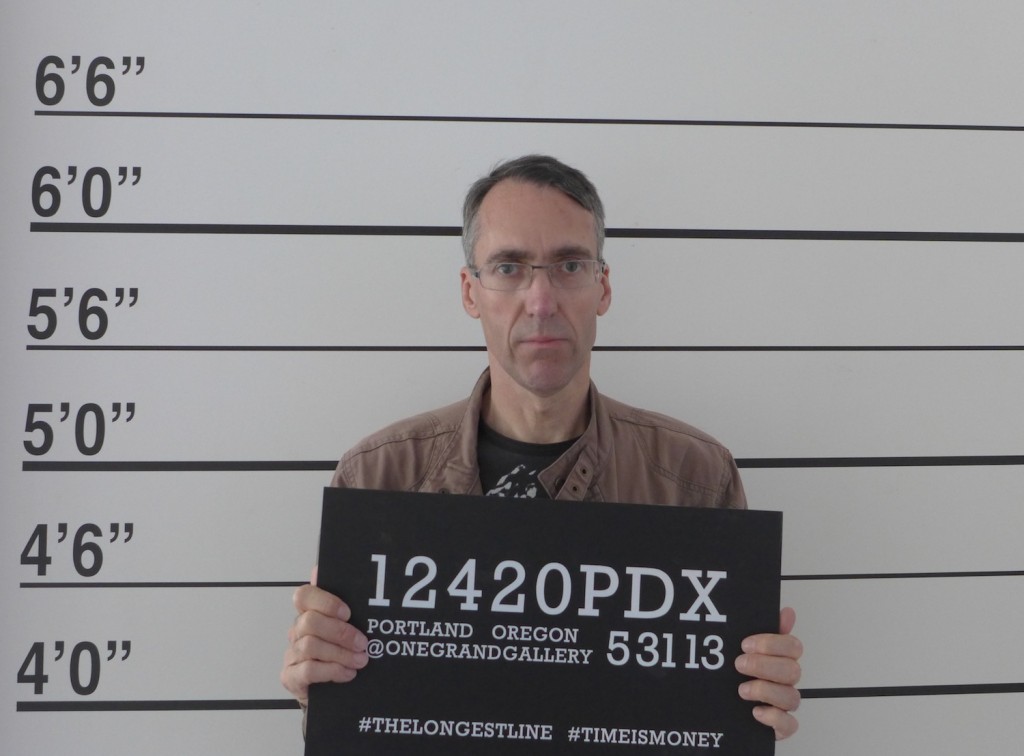
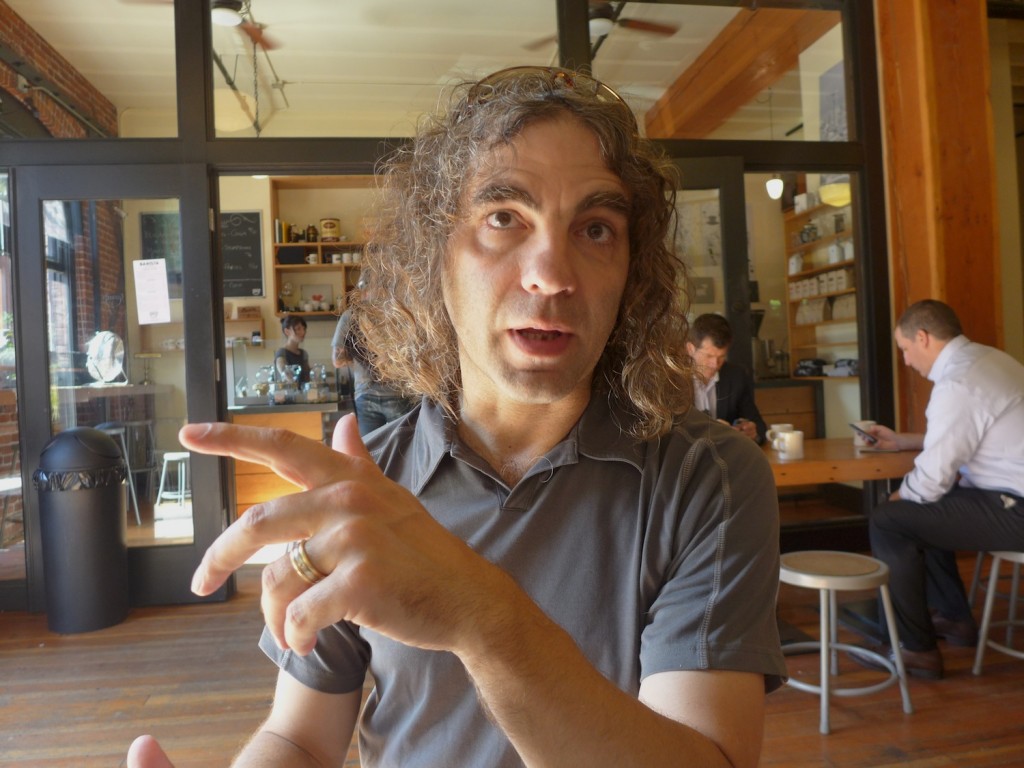
![120114_riesling_global_RZ [1600x1200]](http://www.stuartpigott.de/wp-content/uploads/2013/06/120114_riesling_global_RZ-1600x12003.jpg)
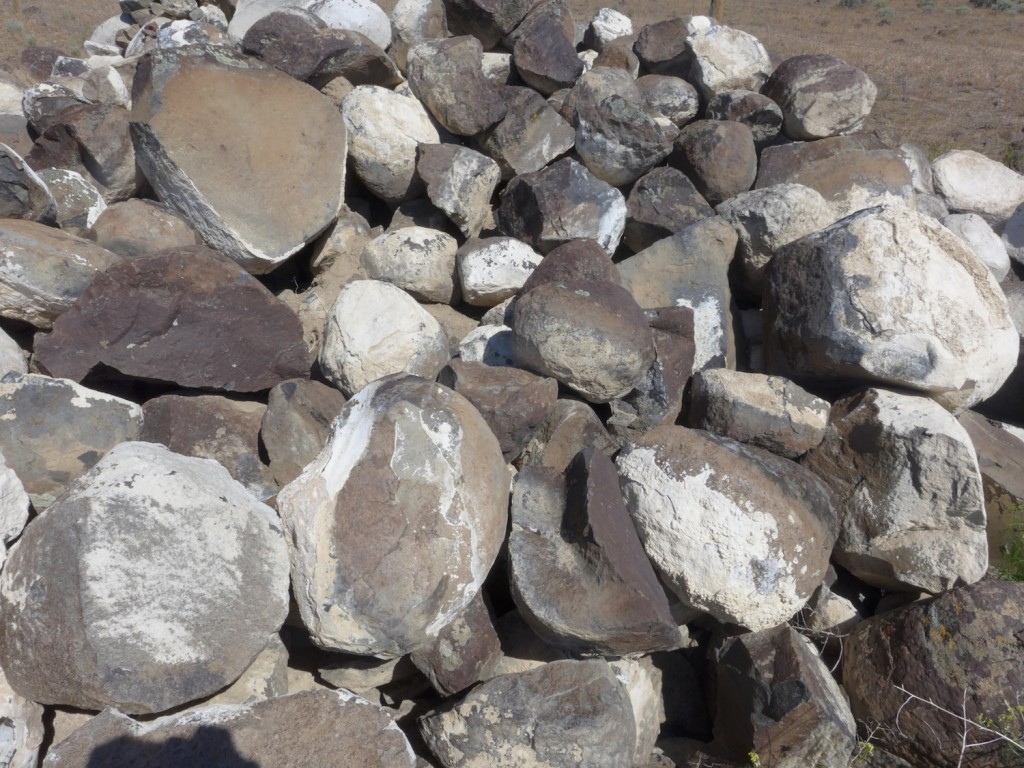

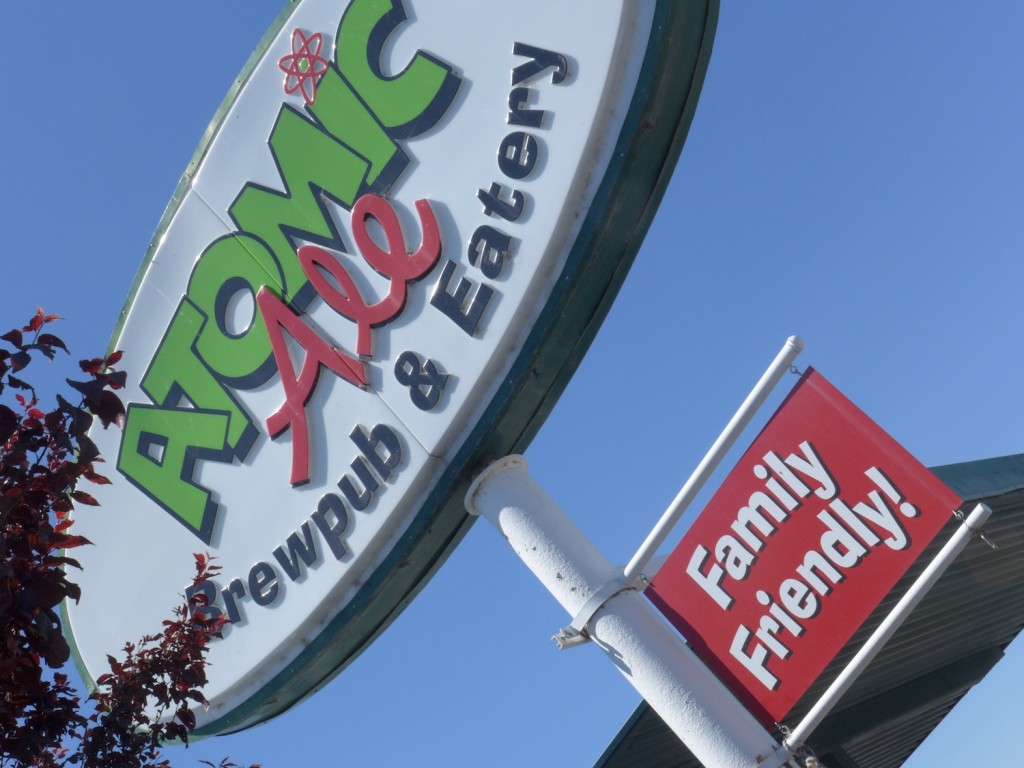
![120114_riesling_global_RZ [1600x1200]](http://www.stuartpigott.de/wp-content/uploads/2013/06/120114_riesling_global_RZ-1600x12002.jpg)
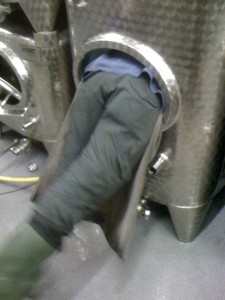
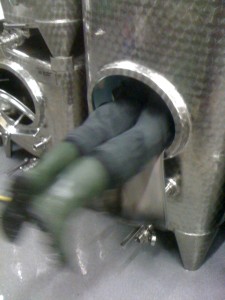
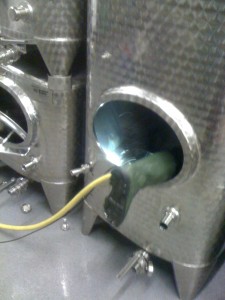
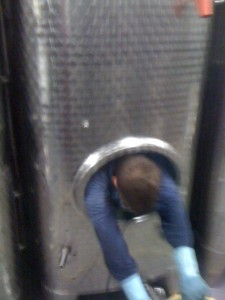
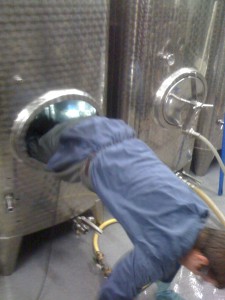

![120114_riesling_global_RZ [1600x1200]](http://www.stuartpigott.de/wp-content/uploads/2013/06/120114_riesling_global_RZ-1600x12001.jpg)
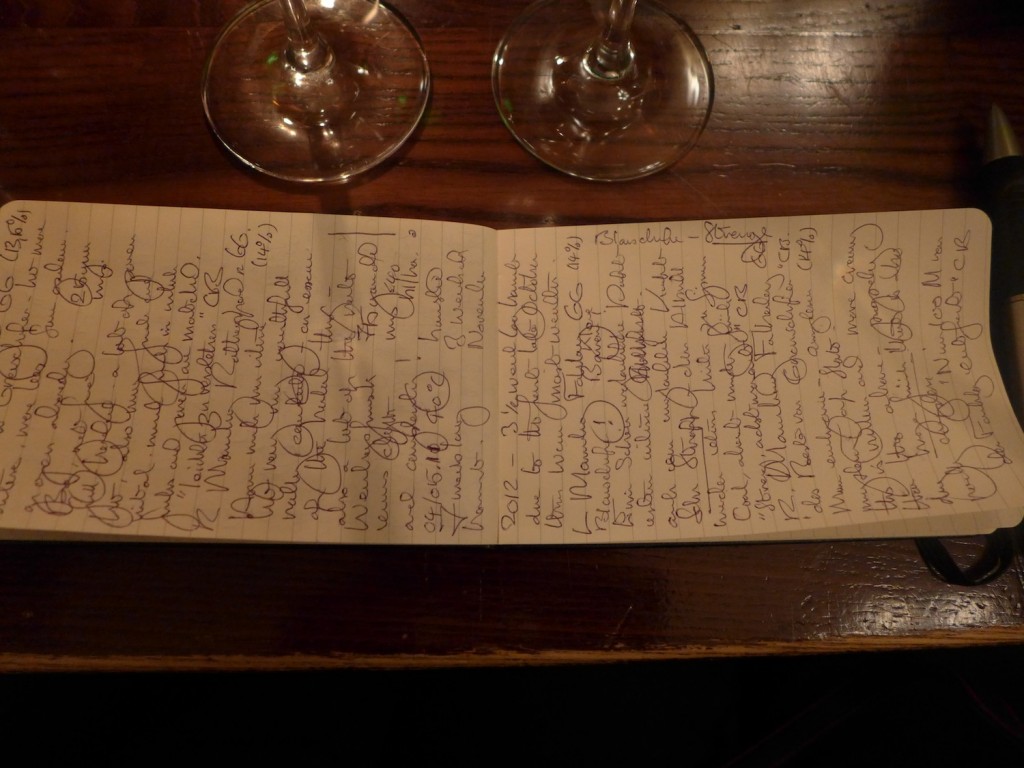
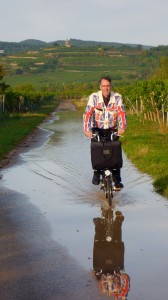
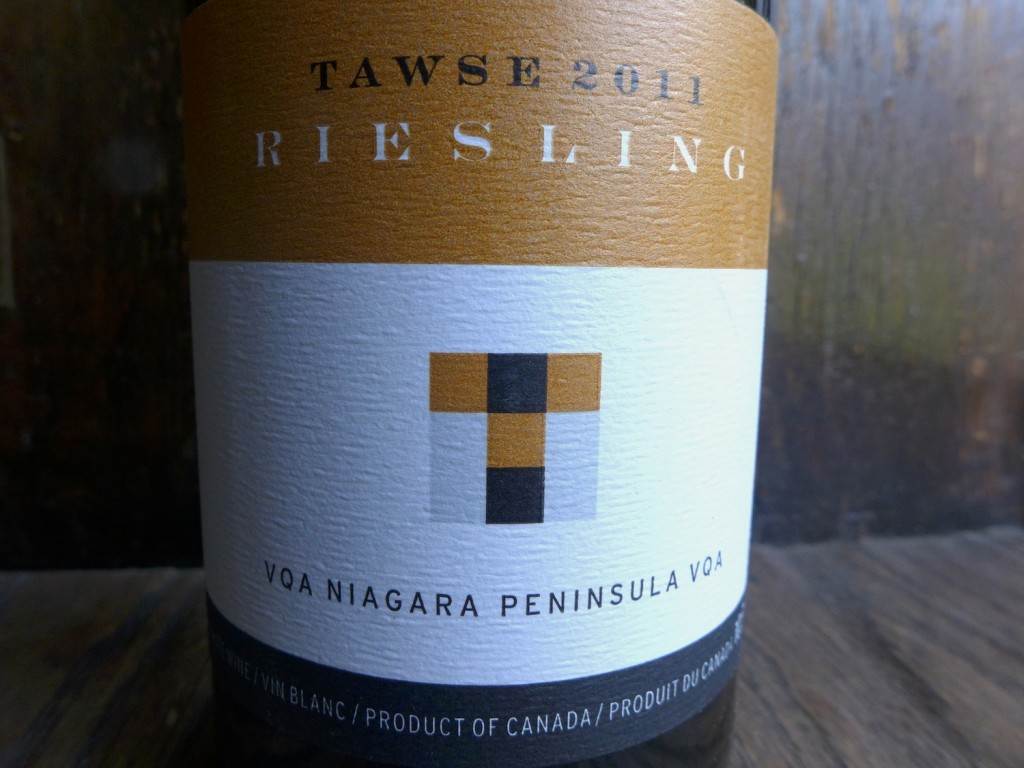
![120114_riesling_global_RZ [1600x1200]](http://www.stuartpigott.de/wp-content/uploads/2013/06/120114_riesling_global_RZ-1600x1200.jpg)

![120114_riesling_global_RZ [1600x1200]](http://www.stuartpigott.de/wp-content/uploads/2013/05/120114_riesling_global_RZ-1600x120011.jpg)